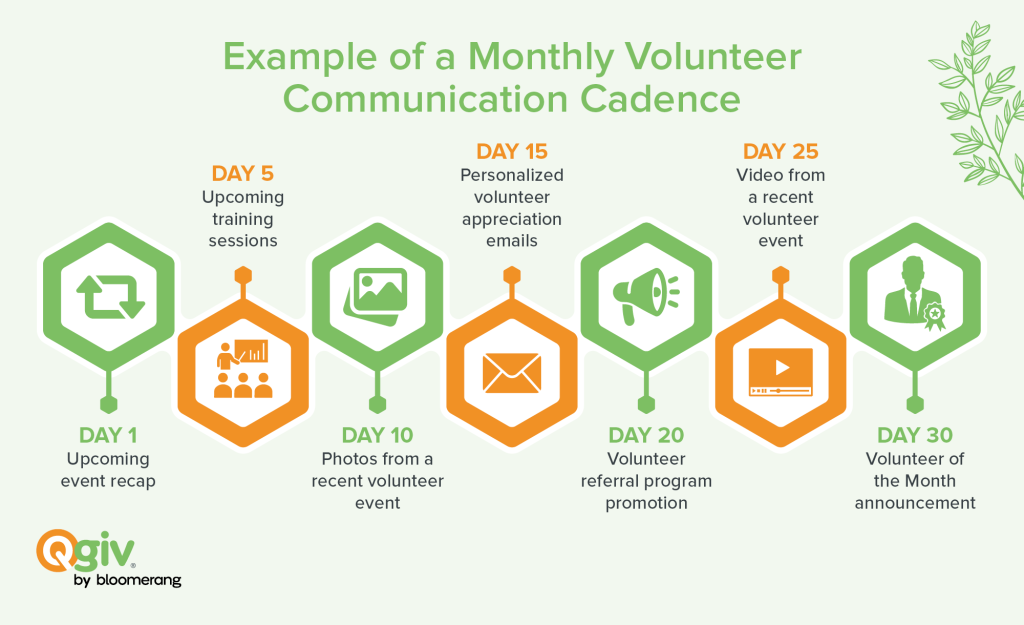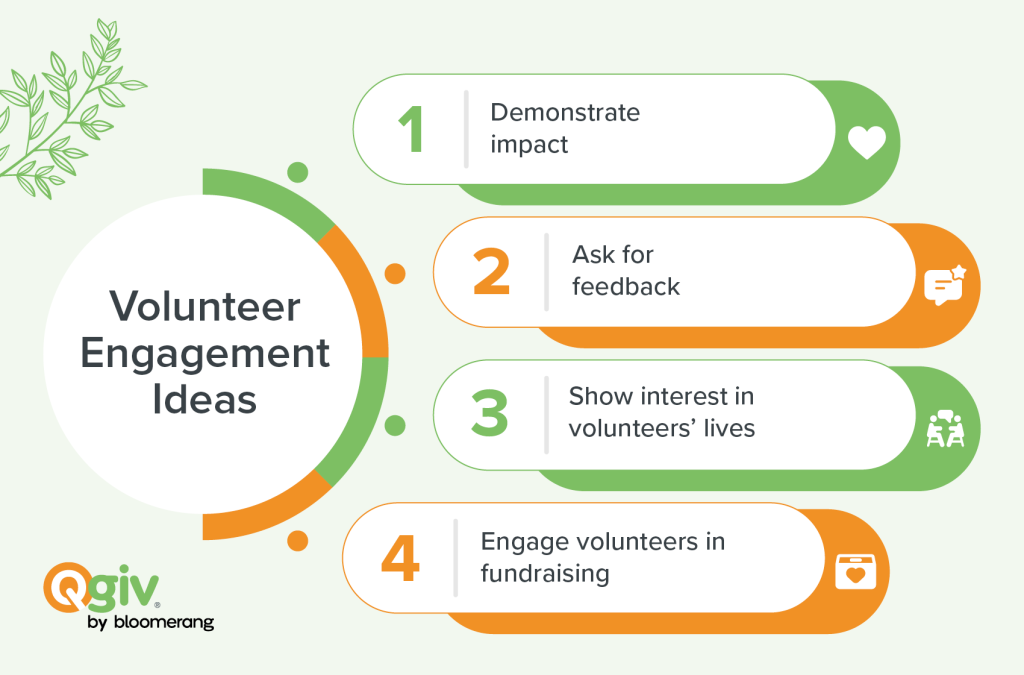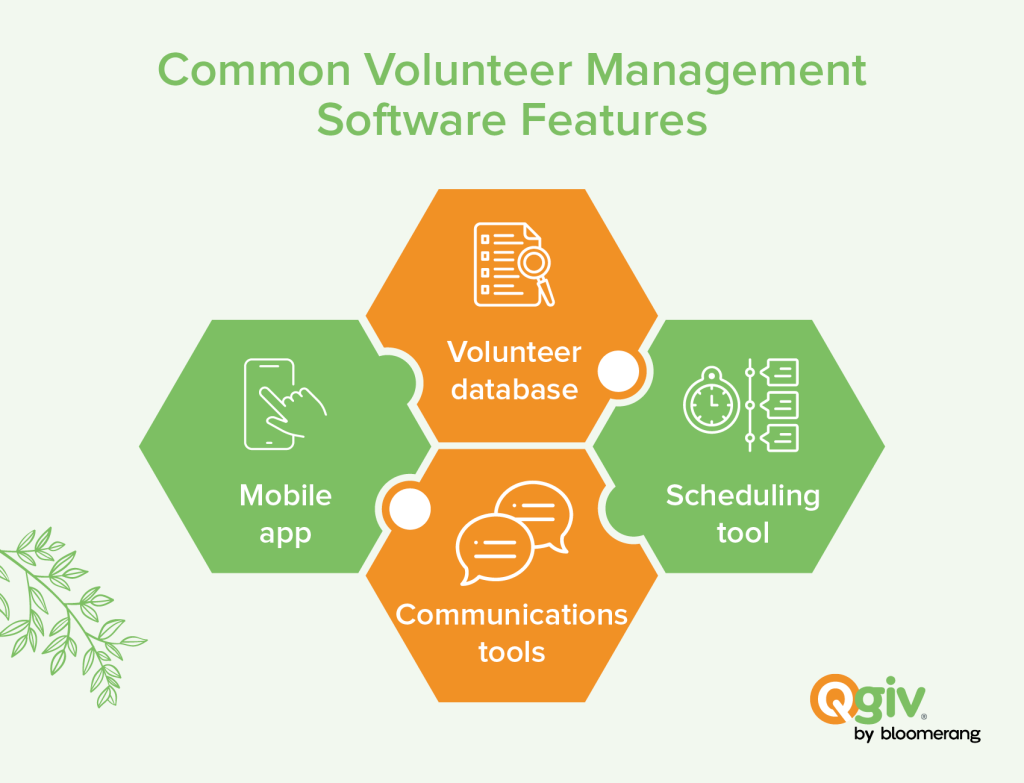Harnessing the passion of your nonprofit’s dedicated volunteers can pay off significantly over time. In fact, the current estimated value of an hour of volunteer work is over $33, representing an incredible opportunity to drive support for your mission.
Learning how to manage volunteers effectively will help bridge the gap between recruitment and retention, ensuring more supporters stick around long-term. This guide covers what you need to know to expertly manage volunteers through the following sections:
- Volunteer management: FAQs
- Volunteer management best practices
- How volunteer management software can help
Volunteer management: FAQs
What is volunteer management?
Volunteer management is the process of working with volunteers throughout their engagement with your organization, from recruitment to ongoing engagement and retention. This journey is also known as the volunteer lifecycle.
What are the objectives of volunteer management?
Effective volunteer management helps your nonprofit:
- Recruit new volunteers more easily. When prospective volunteers see that your organization strives to create a positive, fulfilling volunteer experience, they’ll be much more likely to sign up.
- Improve volunteer satisfaction. Current volunteers will find more meaning in their roles when they feel like integral members of your organization’s team.
- Retain more volunteers over time. Proper volunteer management makes volunteers more likely to continue participating, as volunteers feel more satisfied in their roles and appreciated for their contributions.
What is a volunteer management plan?
A volunteer management plan is the strategy your organization uses to enhance each stage of the volunteer lifecycle.
For example, this template highlights the four stages of the volunteer lifecycle, along with your nonprofit’s objectives at each stage and strategies for improving the volunteer experience.
| Volunteer lifecycle stage | The goal of this stage | Strategies to use at this stage |
| Recruitment | Introduce your volunteer opportunities to new audience members and inspire them to sign up. | Social media marketing, targeted email outreach, word-of-mouth marketing from current volunteers |
| Engagement | Keep volunteers engaged in your mission and provide a fulfilling experience. | Send ongoing communications, offer regular training sessions, and demonstrate volunteers’ impact using data. |
| Appreciation | Recognize volunteers for a job well done. | Send thank-you messages and letters, offer tokens of gratitude (like complimentary merchandise), create a volunteer of the month program, and schedule appreciative social media posts. |
| Retention | Maintain volunteers’ support over time. | Highlight volunteer opportunities that align with supporters’ interests, provide the option to take on leadership roles, and host engaging volunteer social and networking events. |
Assign specific staff members to different roles throughout the volunteer management process. For example, one staff member may be in charge of creating volunteer appreciation efforts while another facilitates ongoing volunteer training.
You can also create a volunteer management calendar to help you stay organized. Your calendar should include a regular communications cadence so that volunteers stay in the loop and have multiple ways to engage with your organization.
Here’s an example of a monthly calendar that includes a touchpoint every five days:

- Day 1 – Send a recap of the month’s upcoming events.
- Day 5 – Highlight upcoming training sessions.
- Day 10 – Share photos from a recent volunteer event.
- Day 15 – Send volunteers a personalized appreciation email thanking them for their recent involvement.
- Day 20 – Promote your volunteer referral program.
- Day 25 – Share a video from a recent volunteer event.
- Day 30 – Recognize the Volunteer of the Month.
These touchpoints cover different topics and offer unique ways for volunteers to connect with your organization throughout the month. With regular outreach, you can keep your volunteer program top of mind for participants and encourage them to stay involved.
Volunteer management best practices
The template above will provide you with a solid foundation for your volunteer management approach, but there are several ways to take this basic plan up a notch. Use these best practices to engage volunteers on multiple levels and secure their long-term support:
Give volunteers a strong sense of purpose
People volunteer because they want to make a difference in the world. A BioLife poll found that 60% of people volunteer to create a positive impact. Give volunteers a sense of purpose while working with you; set expectations, define goals, and ensure they have the tools and guidance they need to make the most of their time.
Also, continually remind volunteers of your mission and how their work contributes to your organization’s ability to achieve mission-related goals.
For example, let’s say your nonprofit’s mission is to help stray pets in your area find forever homes. Many of your volunteer opportunities may consist of cleaning litter boxes or scooping poop—admittedly, not the most glamorous roles. However, let volunteers know that by helping keep your facilities clean, they’re actually creating a more positive environment for potential adopters, leading to more pets finding new homes.
Engage volunteers on multiple fronts
The more you engage with your volunteers, the stronger their emotional bond with your organization will become. Engage volunteers by:

- Keeping them up-to-date on how they’re making a difference in your organization. Share reports, data points, charts, and graphs depicting volunteers’ impact on your mission. For example, at the end of a volunteer shift sorting canned food, let volunteers know how many families will have food on the table this week because of their efforts.
- Asking for (and listening to!) their opinions and ideas. Send regular volunteer surveys to ask for their feedback on your program. Ask about their level of satisfaction with your program, whether they’d recommend the program to a friend, and any suggestions they have to improve your volunteer opportunities. Show them that you take their feedback seriously by highlighting the changes you’ll make in response to their input.
- Demonstrating interest in their lives. By taking an interest in their lives, you can show volunteers that you care about them as people. For example, ask volunteers for their birthdays, and store that information in your volunteer management system. Then, send them a yearly birthday card signed by your full staff.
- Involving volunteers in fundraising. Volunteers often take an interest in fundraising and donating to show their support for your mission in additional ways. According to the Global Trends in Giving Report, 85% of volunteers donate to the nonprofits they volunteer with. You can spotlight giving opportunities, such as your monthly giving program, as well as opportunities to take the driver’s seat with fundraising, like in peer-to-peer campaigns.
Each of these strategies represents a new tether between volunteers and your organization. The more ways your volunteers are involved with your organization, the longer they’re likely to remain engaged.
Understand volunteers’ motivations
The decision to volunteer, just like the decision to donate, is an emotional choice. Volunteers are motivated by different things, and nonprofits can build powerful connections with them by tapping into their motives to get involved.
For example, some volunteers might work with your organization because your mission personally impacts their lives. If your nonprofit works to raise funds for cancer research, volunteers may get involved if they have a family member who has fought cancer.
Other volunteers may get involved because of a personal conviction. For instance, environmentally-conscious volunteers may work with your conservation organization to make a hands-on impact to help the environment.
Combine volunteers’ talents and interests with a role that fits their motives for volunteering, and you’ll help build a meaningful relationship that will last for years.
Offer flexibility
Many volunteers juggle career, school, or family obligations on top of working with your nonprofit. Offering flexibility is an important way to ensure your volunteers can work for you, especially if they’re students or are in the workforce.
Offer shorter shifts, weekend opportunities, and virtual volunteer opportunities, if possible, to build flexibility into your volunteer schedule. Studies show that volunteering online or over the phone is now the third most common way to volunteer, meaning volunteers are eager to make the most of flexible opportunities.
Train volunteers effectively
Whether they’re washing dogs, writing thank-you notes, or helping with an event, it’s critical that your volunteers know what to do. Offer an initial onboarding training session and ongoing training as needed to help volunteers level up their skills.
For example, let’s say you’re training volunteers at your animal shelter. Volunteers may start off with an initial training session that helps them get comfortable working with the most docile animals at your facility. You may also allow volunteers to attend additional training sessions to help them gain the skills needed to handle more challenging or skittish pets.
With the right training, volunteers will feel more productive with their time and complete their tasks more efficiently and effectively.
Prioritize consistency
It’s best to avoid involving volunteers in tasks that require consistent maintenance. Jobs like record-keeping, administrative duties, and coordinating donor relations or events are best suited to full-time, paid staff. If you must use a volunteer in those areas, try to use a volunteer who has worked with you regularly for a long time. Consistency is key!
How volunteer management software can help
Volunteer management software is a tool your nonprofit can use to stay organized, track volunteer information, and facilitate every stage of the volunteer lifecycle.
Common volunteer management software features include:

- A volunteer database to store data about volunteers’ contact information, addresses, and personal information like their birthdays, food allergies, and t-shirt sizes.
- A volunteer scheduling tool to plan shifts, fill open roles, and remind volunteers after they register.
- Communication tools to stay in touch with volunteers and give them an avenue to ask questions as needed.
- A mobile app for volunteers and volunteer managers. Volunteers can use the app to track their volunteer hours and sign up for shifts. Volunteer managers can send push notifications to volunteers, check volunteers in, and complete scheduling tasks from their mobile devices.
Our recommended software tool: Bloomerang Volunteer
When it comes to inspiring volunteers and maximizing impact, our recommended volunteer management solution is Bloomerang Volunteer.
Here are the features that make Bloomerang Volunteer different from other software solutions:
- Integrated background checks help elevate safety at your events and conduct background screenings more quickly and efficiently.
- Two-way profile sync between your volunteer and donor database to track supporters’ volunteering and giving history from the same system.
- End-to-end reporting with custom and pre-built templates that provide a complete view of your volunteers.
- A mobile app that empowers volunteers to take control of their engagement and facilitates smoother communication.
Watch this video to learn how two charitable organizations, Shower Up and Compassion Delivered, used Bloomerang Volunteer to increase their positive impact:
Schedule a Bloomerang Volunteer demo today to learn more about what this tool can do for your nonprofit.
Final thoughts
Finding great volunteers is a lot of work, and when you do get in touch with these passionate individuals, you should go above and beyond to show your respect and appreciation for them. A comprehensive volunteer management strategy will provide the framework you need to create a better volunteer experience that encourages lifelong involvement.
Additional resources
Looking for additional resources to manage volunteers? Start with these blogs:
- The Ultimate Guide to Volunteer Recruitment: 15+ Strategies. Need help finding more passionate supporters to join your volunteer team? Explore top strategies to boost recruitment.
- 23 Best Volunteer Appreciation Gifts to Show Your Gratitude. Offering volunteers appreciation gifts shows how much you care about them. Here are a few ideas for special tokens of appreciation to offer.
- 20+ Volunteer Statistics Every Nonprofit Should Know. What are the current challenges and opportunities facing volunteer managers? Review relevant trends and reports to get a better understanding of the current volunteering landscape.




